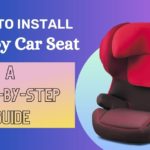Figure 01 Types of car seats and how to pick the right one
Did you know that a baby car seat was first made by a British journalist named Jean Ames in 1962? Not only that, the idea of baby car seat positioning in the back was her brainchild. The first harness was also designed by her with 3-points that have become today’s 5-point harness.
Over time, several types of car seats have been introduced to society depending on age, height, weight, and other requirements-related metrics. Now, as a new parent, you have no idea about these variations and looking for a particular solution for your child.
There are 4 common types of baby car seats: the infant car seat, rear-facing convertible, forward-facing convertible, and a booster. Besides these, you may find some exceptions, such as all-in-one, built-in, custom, and combination car seats.
In this guide, I’ll share all the car seat types and how to select the right one from my real-life experience and practical knowledge based on research.
Browse this Post
Types of Car Seats: Know Before You Purchase

There are several types of baby car seats available in the market. But not all of them are major types to count on and use. Below, I have enlisted all the major and a few exceptional car seat types along with the necessary info to help you finalize better.
1. Infant Car Seat
The first time you bring the little star from the hospital is always memorable and scary too. To decrease that fear, car seat manufacturers design and build the most secure and comfortable car seat, named infant car seats.
Your kid can use this till the 1st birthday celebration. You are probably a new parent, so putting your kid in a professional structure providing safety and elegance is always a good choice. As it’s about a newborn, you can skip the weight and height checking.
2. Rear-facing Convertible
The second type of car seat in your kid’s life. The rear-facing convertible fits kids aged between 2 to 4 years, weighing between 35-50 lbs and height around 3 feet. However, some car seat model supports a bit more height, weight, and age range. Just make sure your kid is comfortable in it, and the manual is properly followed.
3 Front-facing Convertible
It’s the second in the convertible car seat category. Your kid can use this when he/she is aged around 4-7 years, weighing 40-65 lbs, and height around 4.1 feet or more. These car seats allow the parent or caregiver to monitor through the rear-view mirror and also can use a hand to pacify or check(never do that while running).
4. Booster
Booster car seats are used when your kid exceeds the weight, height, and age limit to fit in a forward-facing convertible. Some of the booster car seats use the car seat belt, and some come with the 5-point harness facility.
This type of car seat is best for kids aged 8-12 years, weighing 20-65 lbs, and height is around 4.9 feet. Sometimes, the kid’s height or weight exceeds the regular limit of a convertible. In such cases, read the manual to avoid confusion.
Is There Any Exception?

Typically, there are some exceptions beyond the common type of car seats I just described above. You can use these, too, depending on your kid’s fitness and, of course, the budget.
Here, I have enlisted a few of the popular car seat types that provide a bit more compared to the conventional ones. Such as
All-in-one
You may find it as 3in 1 car seats in some places. These seats are kind of a convertible and a booster by functionalities. From rear-facing seats to boosters, almost all the facilities you can expect from these and that is its specialty.
You can buy this kind of car seat once your boy outgrows the infant car seat and can continue using it till he/she fits an adult car seat belt.
Built-In Car Seat
This is not a regular type of baby car seat that you can buy and use any time you want. These types of seats come built-in with the vehicle seats. Which allows you to skip carrying a car seat along every time you go on a trip.
Car manufacturing company Volvo has been offering this service since 1990, starting with the 960 model. Customers can demand and have a car seat by paying an additional cost. It’s basically a booster seat that is set in the rear seat.
You can easily use and stow back in the seat bench after you finish using it. As per the NHTSA guideline, your kid can use it till he/she is 4.9 feet tall, in other words, 8-12 years of age.
Custom Car Seat
This kind of car seat is designed for kids who need special care and support. Conventional car seats are not built to serve the kids who need special attention as there’s no specific format that fits every special child’s need.
That’s why specially customized restraints are being built to keep these kids safe and comfortable on the road. You can use the car beds for premature kids who need rest.
Again, kids who were born with full bodies but hardly can control their body parts, even behavioral conditions, need special restraints to keep them stable on the road. Through a custom-built car seat, your kid can avail of various types of facilities on the trip.
Combination Car Seat
These types of car seats are a combination of a convertible(front-facing) and a booster (high-back) equipped with a 5-point harness. Parents can use it in 2 ways.
First, as a front-facing with a harness when the kid weighs around 40-65 lbs and secondly, as a booster when the kid outgrows the harness capability and weighs around 100-120 lbs. To fit in this car seat, your kid has to be more than 3 years old.
Note: Though travel systems are kind of a combination of stroller and car seat, it’s up to you to count it as you want.
How To Choose The Right Car Seat For My Kid?

Before you start choosing, first decide what type of car seat you want for your kid. Here, you have to consider the age, weight, height, and, in some cases, your special requirement (if any). Based on the facts, you can initially select a car seat type.
| Car Seat Type | Required Age | Required Weight | Height (Optional) |
| Infant | 0-12 Months | 22-35 lbs | 30-32” |
| Rear-Facing | 2-4 Years | 35-50 lbs | 30-35” |
| Forward-Facing | 4-7 Years | 40-65 lbs | 49” |
| Booster | 8-12 Years | 20-65 lbs | 57” |
Besides these criteria, you have to consider a few more things before making any decision. Such as
Comfortability
This is the most important thing to consider while buying a baby car seat. These car seats are for your little star’s comfort along with adequate safety. Car seat manufacturers design their products and amend them over time just because of this.
Still, you need to make sure that your kid is comfortable with it. If you are a European, then your car seat must have an Isofix connector built-in as the modern family cars have it. Again, there are 3 size groups named O+, 1, and 2/3 based on your kid’s weight.
Tip: European standard car seats have an “E” marked label that makes it easy to identify.
Double-check the age, height, and weight limit of the car seat, or else your kid might face trouble, which will affect the security for sure. I’m sure you don’t want to regret it.
Budget
Budget is like a boundary that we never tend to cross while purchasing a certain product. In the case of purchasing a baby car seat, you also have a budget plan to buy the best possible car seat with your budget.
Let’s say the combination car seats or the 3-in-1 car seats cost a bit more but can serve your kid for a long time until a major issue happens or the kid outgrows. So you have to finalize your budget according to your needs. Again, be aware of overspending.
Mostly, this variation causes price hikes and parents to get confused. If you want a single unit- single usage then happily make your budget and buy the common car seats. But for the other types, you have to spare either facility or budget.
Used Car Seat
Many people recommend avoiding used car seats, but I don’t want you to avoid that completely. Why? Because not all used car seats are faulty, they can risk your kid’s safety. Rather, check the car seat is okay as per the NHTSA guidelines, and you’re good to go.
Some parents may prefer the old ones because of the lower cost than the market. You can count on that if you’re on a tight budget. But in my view, if the car seat is guideline-wise okay, I have no reason to pass it.
Tip: For better security and reliability, try to collect the used car seat from your friends and family.
You might also want to know: Is It Legal To Sell Used Child Car Seats? Explained
Space Availability
Size matters, whatever the sector or space is, size matters. This way, your car’s size can affect your car seat type. The infant car seats are technically smaller than the convertibles, as well as the 3-in-1 car seats.
So, if your car is below 6 feet in width, you better go for an infant car seat and other common types. In this case, you can easily choose any type of car seat only if the car’s width is equal to or above 6.5 feet.
Proper Installation
Some baby car seats come with a separate basement, and some without it. Besides these, there are plenty of portable parts that have to be installed correctly unless you’ll have to work on them later. So make sure that all the parts of your car seat are installed properly according to the instructions.
What are you looking for now? How to install a car seat? Just check this out.
Wrapping Up
As I mentioned in the beginning, baby car seats are designed for the comfort and safety of your kid. Based on different ages, heights, weights, special requirements, and regions, there are several types and categories of baby car seats that have evolved.
Among all the variations, I found 4 basic categories of baby car seats they are, infant, rear-facing convertible, forward-facing convertible, and booster. However, there are some exceptions, too, such as built-in 3-in-1, custom for special children, and more.
You May Also Like
- How To Assemble Baby Car Seat After Washing? The Pro Way
- How To Clean Baby Car Seats: Elevate Safety And Comfort
- Safe Way To Lift And Carry Baby Car Seat | Forget Back Pain
- How Many Car Seats Do I Need? Remember 3 Factors
- How Long Infant Car Seat Can Be Used? [Explained]
Meta: Depending on height, weight, and age, car seats are of 4 categories: infant, rear-facing, and forward-facing convertibles and booster car seats.





